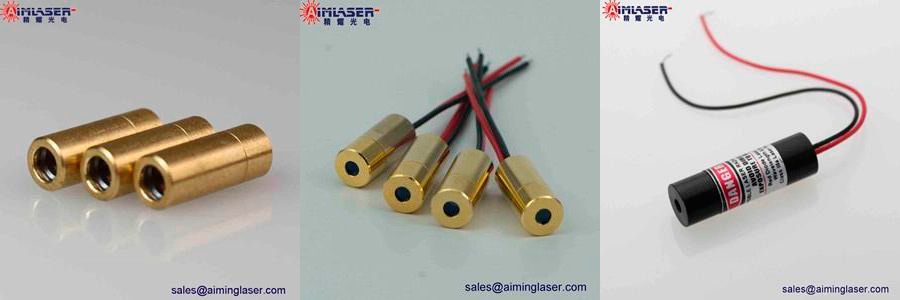Laser is a kind of nature that does not exist originally, because of the excitation and issued with good direction, high brightness, good monochrome, good coherence, and other characteristics of light.
Lasers generally consist of three parts.
Laser generation must choose the right working medium, which can be gas, liquid, solid, or semiconductor. In this medium, particle number inversion can be achieved to create the necessary conditions for obtaining lasers. Obviously, the existence of metastable energy levels is very beneficial to realize particle number inversion. There are nearly one thousand kinds of working media, which can produce a wide range of laser wavelengths.

To cause the particle number inversion in the working medium, the atomic system must be excited in some way to increase the number of particles in the upper energy level. Generally, gas discharge can be used to use the kinetic energy of electrons to excite medium atoms, called electric excitation; A pulsed light source can also be used to illuminate the working medium, called light excitation; There are thermal excitation, chemical excitation, and so on. Various forms of excitation are figuratively called pumping or pumping. To continuously get the laser output, it is necessary to continuously "pump" to keep more particles in the upper energy level than in the lower energy level.
With the right working substance and excitation source, particle number inversion can be achieved, but the intensity of the exciting radiation produced by this is too weak to be practical. Therefore, people will choose to use an optical resonator for amplification. The so-called optical resonator cavity is installed at both ends of the laser, face to face with two high reflectivity mirrors. One is almost completely reflected, one is partially reflected and a small amount is transmitted so that the laser can be emitted through this mirror. The light reflected back to the working medium continues to induce new stimulated radiation, which amplifies the light. So the light oscillates back and forth in the resonator, causing a chain reaction that amplifies in an avalanche, producing an intense laser that comes out of one end of the partially reflecting mirror.
Lasers are classified according to power into Class I, Class II, Class IIIA, Class IIIB, and Class IV
Class I: Low output power (power less than 0.4MW), no more than MPE value under any conditions for eyes and skin, CD players, CD-ROM equipment, geological exploration equipment, and laboratory analysis instruments, etc.
Class II: low output visible laser (power 0.4MW -1mW), the reaction time of the human eye closed is 0.25 seconds, using this time to calculate the exposure can not exceed the MPE value. Commonly used in classroom demonstrations, laser Pointers, sighting equipment, and range finders, etc.
Class IIIA: continuous laser of visible light, the output is 1-5mW laser beam, the energy density of the beam should not exceed 25W/m.
Class IIIB: 5-500MW continuous laser, dangerous to observe directly within the beam. However, the minimum irradiation distance is 13cm, and the maximum irradiation time is less than 10 seconds. The laser is often used for things like spectroscopies and entertainment light shows.
Class IV: High output to continuous laser (> 500mW), fire hazard, diffuse reflection hazard. Typical applications include surgery, research, and cutting. Welding and micromachining.